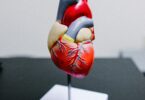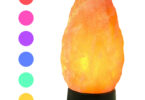How can I tell if my child needs a cochlear implant or a hearing aid?
Hearing aid help most children with hearing loss, but cochlear implants help some. The audiologist and other hearing health experts will propose hearing aid or a cochlear implant based on your child’s hearing loss type and severity and the inner ear’s shape and architecture.
Hearing loss is routinely detected in infancy, thus children usually start with hearing aid before getting a cochlear implant. Hearing loss in children requires frequent hearing exams to monitor hearing ability and hearing aid benefit.
Kids with conductive hearing loss—caused by the outer or middle ear not conducting sound properly but with undamaged hearing nerves—may benefit from a bone-anchored hearing system.
Fitting of hearing aids
Regardless of the degree of hearing loss, almost all kids receive behind-the-ear (BTE) hearing aids. To guarantee that the gadget will fit securely, there are small BTE sizes designed especially for kids. A soft, plastic earmold that is custom-fit to the outer ear allows the hearing aid to transmit sound to the ear. As the youngster gets older, earmolds and domes can be changed out without having to buy new hearing aids.
An outline of the procedure for fitting youngsters with hearing aids is provided below.
Obtaining new earmolds and taking ear impressions
Typically, taking ear canal impressions comes first in the process of installing hearing aid. These must be done to guarantee that your child’s hearing aid earmolds fit them precisely. A cotton or foam dam will be inserted deeply into the ear canal by the hearing specialist, who will then delicately fill the canal with impression material. The imprint material will cover the whole outer ear to ensure that all ear components are appropriately portrayed. Parents are frequently asked to hold the baby or youngster while the material sets since curious hands need to stay out of the way.
Make youngsters’ hearing aid use more enjoyable. Parents can choose a distinct colour for each ear when ordering earmolds, making it simple to instantly identify which earmold fits which ear. New earmolds may occasionally be required as the youngster develops, so colours can be switched around as preferred. Choosing the hue is frequently enjoyable for older kids. Even a “clean” earmold is an option. The custom earmold order could take up to two weeks to arrive after the audiologist mails out the ear impressions.
A child may require brand-new earmolds every few weeks to months during the first five years of life. The whistling sound that suggests hearing aid feedback must be identified by parents as an indication that the child’s earmolds need to be replaced because they are no longer fitting properly.
“Sound enters the world thanks to technology. It serves as the brain’s entrance. Therefore, we must ensure that technology is reliable at all times “said Jane Madell, a paediatric audiologist, in a report on infant earmolds. “Sound won’t reach the brain if earmolds are not fitted properly.”
The hearing aids being fitted
The audiologist will fit the earmolds and programme the hearing aids for your child’s hearing loss during this appointment. After programming and activating the hearing aids, your child will hear new sounds. Babies often immediately turn their heads toward their parents when they speak. Toddlers may smile at new stimulation. After programming and activation, the audiologist will verify that mild sounds are loud enough, average sounds are pleasant, and strong sounds aren’t too loud.
The hearing specialist will also devote a lot of time to showing you how to put on and take off your hearing aids, connect and unconnect the earmold or dome, and distinguish between your right and left aids. You will learn how to activate and deactivate them, how to test their functionality by listening for sound, and how to change or recharge the battery. Additionally, you’ll learn how to clean and put away your hearing aids at night.
Follow-up consultations
Your child will need some time to learn how to make advantage of the new sounds they are hearing. The infant or toddler will be able to catch up to peers their own age with the support of speech and language therapy, and the kid’s speech, language, and hearing milestones will be met. To keep track of hearing capacity, frequent follow-up sessions with the audiologist will be required. Subsequent hearing tests will help assess the child’s hearing abilities across particular pitches if they were healthy as an infant. When the child is a toddler, it will be simpler to give behavioural hearing tests, which are the gold standard. Programming for hearing aids will be adjusted along the way to take into account these more precise hearing exam findings.
The effectiveness and comfort of the hearing aid will also be checked at the follow-up sessions.
Advice for parents about hearing aid
Maintaining them
If your child hasn’t used hearing aids since infanthood or toddlerhood, keeping them on may be difficult. If your child frequently removes or refuses hearing aids, there are ways to make them more comfortable.
Put the hearing aids on your child when you are engaged in an enjoyable activity so that he or she won’t be as interested in taking them off or pulling them out.
- Try wearing a soft headband that you can fasten over your hearing aid, but make sure it doesn’t hide the micropho
- To keep the hearing aids fastened to your child’s clothing, use special clips. You won’t lose the pricey equipment even if the hearing aids are removed.
- You can get assistance from your child’s audiologist in locating headbands and clips that will be useful.
Every day checks
Children who are too young to communicate a problem with their hearing aid need to have them checked frequently. You should test your hearing, check the battery, and inspect the devices for moisture and debris. Keep in mind that if you can’t hear sounds enhanced through the hearing aids. your child won’t be able to either.
Additionally, you should perform a visual inspection each time you put the hearing aid in. Make sure the earmolds and hearing aids are dry and clean. If the earmold is filthy, disconnect it from the hearing aid. Blow any moisture from the earmold or tube with a bulb syringe, then clean any debris with a tissue or disinfectant wipe. Reconnect the earmold to the hearing aid once it has completely dried, then put it back in your child’s ear.
Safety
The social, academic, and communication development of your child can be greatly impacted by the correct hearing aids. To get the most out of the experience, work with your child’s audiologist, doctor, and educational support system.
Reminder: If your child has ingested a hearing aid battery, get them to the hospital right away. The clock is ticking. More on the security of hearing aid batteries.
Teaching about hearing aid
The majority of companies that produce hearing aids and cochlear implants for children also produce aids for listening in the classroom. FM systems are among the most popular options. The child’s hearing aid is typically connected to the receiver of a microphone that the teacher typically wears.
To learn more about hearing aids> visit: Jglasseshearing
Article posted by realblogwriter.com








